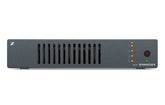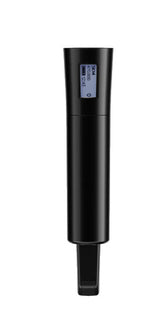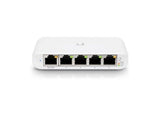Best Practices for Securing Small Business Premises
Introduction
Did you know that 75% of small businesses experience some form of security breach each year? Whether it's theft, vandalism, or cyberattacks, small businesses are frequent targets due to their often-limited security infrastructure. The good news? Implementing effective security measures can significantly reduce these risks and protect your assets, employees, and customers.
Securing your business premises goes beyond just installing a few cameras—it involves layered security strategies, including physical security, surveillance, access control, and cybersecurity. In this guide, we’ll explore the best practices for small business security, common challenges, and how to implement effective security solutions.
What Is Small Business Security & Why Is It Important?
Understanding Small Business Security
Securing small business premises involves protecting assets, data, employees, and customers from threats such as:
-
Physical threats (burglary, vandalism, unauthorized access)
-
Cyber threats (hacking, phishing, data breaches)
-
Operational disruptions (fire, power outages, theft-related downtime)
With the rise of smart security solutions, businesses can integrate AI-powered surveillance, cloud-based access control, and remote monitoring to enhance security in real-time.
Why Security Matters for Small Businesses
-
Financial Protection: Theft and vandalism can lead to costly damages and insurance claims.
-
Employee & Customer Safety: Secure premises create a safer environment for everyone.
-
Regulatory Compliance: Businesses handling sensitive data must comply with security standards.
-
Reputation Management: A security breach can damage customer trust and business credibility.
Benefits of Securing Small Business Premises
1. Prevention of Theft & Vandalism
-
Surveillance cameras deter criminals and provide evidence in case of incidents.
-
Motion-sensor lighting reduces hiding spots for intruders.
2. Improved Access Control
-
Smart locks and keyless entry prevent unauthorized personnel from entering restricted areas.
-
Biometric authentication ensures that only authorized employees can access sensitive areas.
3. Enhanced Cybersecurity
-
Firewalls and encrypted networks prevent data breaches.
-
Multi-factor authentication (MFA) adds an extra layer of login security.
4. Better Monitoring & Emergency Response
-
Remote security monitoring allows business owners to monitor premises from anywhere.
-
Automated emergency alerts notify authorities and employees of potential threats.
5. Lower Insurance Premiums
Many insurance companies offer discounts for businesses with comprehensive security systems, reducing overall operational costs.
Challenges & Considerations in Small Business Security
1. Budget Constraints
-
Many small businesses operate on tight budgets, making security investments seem costly.
-
Solution: Prioritize security upgrades in phases, starting with critical areas such as entry points and data protection.
2. Integration with Existing Infrastructure
-
Some businesses struggle to integrate modern security solutions with legacy systems.
-
Solution: Choose security systems with API integrations and cloud capabilities.
3. Lack of Employee Training
-
Many security breaches occur due to human error.
-
Solution: Conduct regular security training sessions on password hygiene, access protocols, and emergency response.
4. Cybersecurity Vulnerabilities
-
Small businesses are often targeted due to weak security defenses.
-
Solution: Implement firewalls, encryption, and employee cybersecurity awareness programs.
Best Practices for Securing Small Business Premises
1. Install a Comprehensive Surveillance System
-
Use HD security cameras with night vision and motion detection.
-
Opt for cloud-based storage for easy remote access and backup.
-
Ensure strategic camera placement at entry points, cash registers, and stockrooms.
2. Use Smart Access Control Systems
-
Replace traditional keys with keyless entry and smart locks.
-
Implement biometric or RFID access for high-security areas.
-
Set up role-based access to limit entry based on employee roles.
3. Upgrade to AI-Powered Intrusion Detection
-
Use AI-powered alarms that differentiate between false alarms and real threats.
-
Integrate facial recognition software to detect suspicious activities.
4. Strengthen Cybersecurity Measures
-
Install firewalls and endpoint protection on all business devices.
-
Require multi-factor authentication (MFA) for all logins.
-
Regularly update software and firmware to fix security vulnerabilities.
5. Enhance Physical Security with Smart Locks & Barriers
-
Install reinforced doors and shatterproof windows.
-
Use automatic locks and security gates for after-hours protection.
6. Leverage Remote Monitoring & Mobile Security Alerts
-
Use security systems with mobile apps for remote access.
-
Set up real-time alerts for unauthorized access or security breaches.
7. Develop an Emergency Response Plan
-
Train employees on security protocols and emergency evacuation procedures.
-
Have predefined roles in case of break-ins or cyberattacks.
Conclusion
Securing a small business involves a layered security approach combining physical protection, surveillance, access control, and cybersecurity. By investing in smart security solutions, business owners can protect assets, reduce risks, and create a safer environment for employees and customers.
From AI-powered cameras to biometric access control, the right security strategies enhance business safety and peace of mind. Small businesses must stay proactive in upgrading security systems to keep pace with evolving threats.
Looking for reliable security solutions? SportsGeekUSA offers top-tier surveillance cameras, access control systems, and smart security devices to keep your business safe.
➡️ Explore our latest security solutions today!
FAQs
1. What is the most cost-effective security solution for small businesses?
Security cameras and smart locks provide affordable yet effective protection for small businesses.
2. How can small businesses prevent cyberattacks?
Implementing firewalls, encrypted Wi-Fi, and multi-factor authentication can significantly reduce cyber threats.
3. Is cloud-based surveillance better than traditional CCTV?
Yes, cloud-based surveillance offers remote access, better storage, and real-time alerts, making it a more efficient and scalable option.











